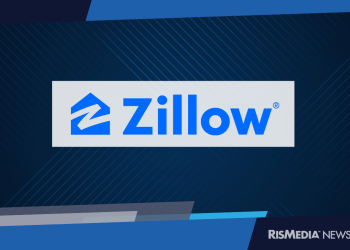Last month, Congress passed a $2 trillion relief bill, the CARES Act, which will send direct payments to American taxpayers, as well as provide a variety of aid options for businesses and U.S. residents, to reduce the financial strain introduced by the COVID-19 pandemic.
The CARES Act includes:
- Direct one-time payments of $1,200 per taxpayer (with a threshold of $75,000 per individual before it begins phasing out)
- Increased unemployment benefits with new eligibility for independent contractors and gig workers
- $350 billion in loans to help small businesses struggling from COVID-19-related closures
- Delayed due dates for employer payroll taxes
- A tax credit for retaining employees for up to 50 percent of wages paid during the pandemic crisis; only businesses forced to pause operations or who experienced a 50 percent drop in gross receipts from the previous year are eligible
- A $500 billion pool of taxpayer funds to create loans, loan guarantees or investments to or in businesses, states and municipalities that have been damaged by the crisis
- $17 billion in loans and loan guarantees for “businesses critical to maintaining national security”
- $117 billion into hospitals and veteran healthcare
- Suspension of federal student loan payments until Sept. 30, with no interest accrual
Here’s the breakdown of the most noteworthy provisions, how you can apply for aid and what the stipulations are:
Stimulus Payments
Taxpayers will receive a one-time $1,200 payment, either via mailed check or as a direct deposit if that was the method of reimbursement set up for 2018 or 2019 tax returns. The IRS expects Americans to start receiving electronic payments as soon as April 9, with mailed checks taking more time. Taxpayers do not have to sign up or apply to receive the payment, and will not be asked to verify their information.
For those who have not had direct deposit in the past, the IRS stated “In the coming weeks, Treasury plans to develop a web-based portal for individuals to provide their banking information to the IRS online, so that individuals can receive payments immediately as opposed to checks in the mail.”
Who is eligible? In order to receive the payment, an individual must have a Social Security number, filed taxes in 2018 or 2019 (or, if they don’t earn enough to file, they must receive Social Security payments) and not have been claimed as a dependent on another person’s tax return.
While the maximum payment is $1,200 for single filers, not all taxpayers will receive this amount. Filers with an adjusted gross income below $75,000 will receive the full credit, while payments will begin to phase out at a rate of $5 for each $100 over the thresholds of $112,500 for single filers and $150,000 for married couples filing jointly.
Taxpayers will receive an additional $500 per child under 16 years of age. Those who have had children in 2020 will likely receive $500 credits next year when they file their 2020 taxes, as the current child tax credits are based on 2019 taxes (or 2018 taxes for those who have not yet filed).
Unemployment Benefits
Under the stimulus package, unemployment benefits are available to freelancers and independent contractors, as well as other individuals, who cannot work due to COVID-19. The bill provides an additional $600 per week in benefits for four months, on top of the regular state unemployment checks. The duration of unemployment benefits has also been extended by 13 weeks from the 26 weeks normally offered.
Because each state determines eligibility when it comes to unemployment benefits, who gets approved or rejected may be subject to location and individual cases.
According to the Wall Street Journal, these unemployment provisions may be available starting April 13. States are awaiting the funding, along with specific guidance related to the CARES Act unemployment provisions. Depending on their access to technology and funds, states could begin releasing the additional $600 weekly payments within a week or two. However, for some states, it could be two to four weeks or longer until they receive access.
The additional payments will, however, be retroactive to April 5. For Americans who are unable to receive these benefits as states await instructions, they may receive a lump sum payment once the benefits are available.
Those interested in filing for unemployment benefits must visit their state’s Department of Labor website. The National Association of REALTORS® also released an FAQ on unemployment assistance as outlined in the relief package.
Small Business Loans
Under the new bill, the federal government is providing $350 billion in 1-percent interest loans for small businesses with fewer than 500 employees who are struggling due to COVID-19 through the Paycheck Protection Program (PPP). There is an incentive under the PPP, which allows borrowers to have the loan and accrued interest completely forgiven, tax-free, if the funds go toward payroll costs, mortgage payments, rent and insurance, and the borrower doesn’t fire employees or cut payroll in an eight-week period, starting when the loan is taken out.
However, there have been obstacles. Some banks will not lend to individuals who don’t have an existing relationship with them, and some financial institutions have not yet begun processing applications, awaiting guidance from the Small Business Administration (SBA).
Fountainhead, one of the 14 “non-banks” in the U.S. that is licensed to lend PPP loans, released the following statement:
“For the past two weeks, we have been working tirelessly to prepare for the SBA’s new Paycheck Protection Program (PPP). Despite widespread publicity about the government-sponsored, private-sector program being ready to accept applications by Friday, April 3, SBA has NOT provided adequate guidance to us on how the program will be effectively administered,” says Chris Hurn, CEO and founder of Fountainhead. “Joining dozens of the largest financial institutions across the country, including JP Morgan Chase, we will NOT begin submitting to SBA on April 3 as we had previously hoped. However, please understand we have every intention of participating in and championing this program.”
Other banks, such as Wells Fargo, have been flooded with applications and are no longer accepting new applications.
The Federal Reserve announced it would be purchasing emergency loans issued by the SBA under the PPP in order to free up cash to issue new loans under the program and through conventional lines of credit, according to The Hill.
Small businesses can borrow 250 percent of their average monthly payroll expenses, capping individual salaries at $100,000 per year, with the total loan amount capping at $10 million. The loans are meant to help cover eight weeks of payroll expenses, and can be applied any time until June 30. Business owners interested in applying for a PPP loan can contact local banks, credit unions and other lenders.
Student Loan Suspension
Also included in the bill, the U.S. government is automatically suspending student loan payments and waiving interest for six months. The waiver only applies to federal loans, such as Direct federal loans and PLUS loans. Borrowers will have to check with their lenders, as some federal loans are excluded if they are guaranteed but not held by the government. Private student loans are excluded; however, some banks are offering debt relief options.
Many loan servicers are playing catch up; therefore, some borrowers may not yet see the change on their account but may request refunds as the waiver is retroactive from March 13. Auto-debits are being suspended, but borrowers can choose to continue making payments if they are able to afford doing so.
More Aid to Come?
While not yet formally proposed, members of Congress have expressed the need for another bill to expand the provisions passed in the CARES Act. Additionally, on Twitter, President Trump announced he would ask Congress for additional PPP funding if the $349 billion allotted in the current bill is depleted.
As the coronavirus and its impact on the industry unfold, RISMedia is providing resources and updates. Get the latest.
 Liz Dominguez is RISMedia’s senior editor. Email her your real estate news ideas at ldominguez@rismedia.com.
Liz Dominguez is RISMedia’s senior editor. Email her your real estate news ideas at ldominguez@rismedia.com.











